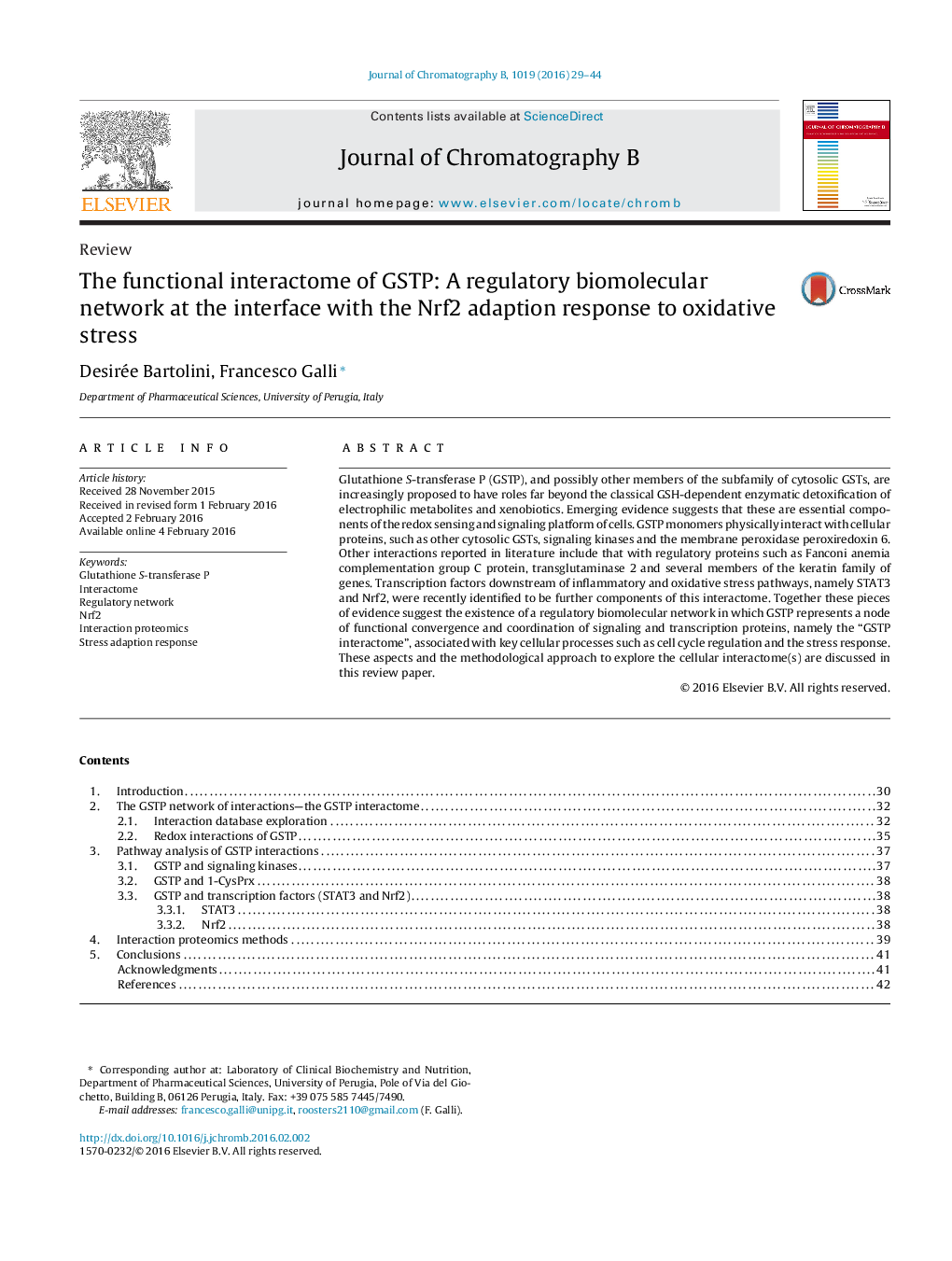| Article ID | Journal | Published Year | Pages | File Type |
|---|---|---|---|---|
| 1211881 | Journal of Chromatography B | 2016 | 16 Pages |
•Monomeric GSTP directly interacts with cellular proteins such as kinases and Prxd6.•Nrf2 is now recognized to be a component of GSTP interactome.•The GSTP interactome may influence cell cycle regulation.•The GSTP interactome may control the response to redox stresses.
Glutathione S-transferase P (GSTP), and possibly other members of the subfamily of cytosolic GSTs, are increasingly proposed to have roles far beyond the classical GSH-dependent enzymatic detoxification of electrophilic metabolites and xenobiotics. Emerging evidence suggests that these are essential components of the redox sensing and signaling platform of cells. GSTP monomers physically interact with cellular proteins, such as other cytosolic GSTs, signaling kinases and the membrane peroxidase peroxiredoxin 6. Other interactions reported in literature include that with regulatory proteins such as Fanconi anemia complementation group C protein, transglutaminase 2 and several members of the keratin family of genes. Transcription factors downstream of inflammatory and oxidative stress pathways, namely STAT3 and Nrf2, were recently identified to be further components of this interactome. Together these pieces of evidence suggest the existence of a regulatory biomolecular network in which GSTP represents a node of functional convergence and coordination of signaling and transcription proteins, namely the “GSTP interactome”, associated with key cellular processes such as cell cycle regulation and the stress response. These aspects and the methodological approach to explore the cellular interactome(s) are discussed in this review paper.
